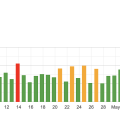Curious about how websites rank on search engines and how that impacts your online browsing experience? “What Is Mobile-first Indexing?” dives into the essential concept where search engines prioritize the mobile version of a website over the desktop version for indexing and ranking. This article succinctly explains why mobile-first indexing matters, how it influences your website’s performance, and what steps you can take to optimize for it. Whether you’re a business owner, a web developer, or just someone keen on understanding the digital landscape, this guide offers clear and practical insights to help you navigate the evolving world of search engine optimization. Have you ever wondered why your website’s performance is different on mobile than on desktop? If you’ve heard the buzz about mobile-first indexing but aren’t entirely sure what it means for your site, you’re in the right place. Let’s dive deep into understanding this.
What Is Mobile-first Indexing?
The Basics
Mobile-first indexing is a shift in how Google ranks and indexes websites. Traditionally, Google used the desktop version of your site to determine its ranking and indexing. However, with the rise of mobile internet usage, Google decided to switch the focus to mobile versions. So, in simple terms, Google predominantly uses the mobile version of your content for indexing and ranking.
Why The Change?
Well, the data speaks for itself. More people now use mobile devices to browse the internet than ever before. Google’s move to mobile-first indexing ensures a better user experience across the web—regardless of the device you’re using.
The Impact
The move to mobile-first indexing has significant implications for site owners, SEO specialists, and even users. If your mobile site isn’t up to par, it could hurt your search engine rankings, which in turn affects your visibility and traffic.
How Mobile-first Indexing Works
Crawling and Indexing
In a nutshell, Googlebot, Google’s web crawler, now primarily indexes the mobile version of your site rather than the desktop version. If your site has separate URLs for mobile and desktop (like m.example.com vs. www.example.com), Google will prioritize the mobile URL in indexing.
| Desktop-first Indexing | Mobile-first Indexing |
|---|---|
| Focus on desktop version | Focus on mobile version |
| Secondary mobile crawl | Primary mobile crawl |
| Limited mobile user impact | Significant mobile user impact |
User-Agent
You’ll notice Googlebot uses a mobile user-agent to crawl your site. This means that Google views your site as a mobile user would. Ensuring your mobile site is fully functional and user-friendly has never been more critical.
Content Parity
For an optimal experience, your mobile and desktop sites should offer the same content. If there’s a discrepancy—for instance, if critical content is missing on the mobile version—Google may rank your site lower.

Preparing Your Site for Mobile-first Indexing
Mobile Optimization
The first step to prepare for mobile-first indexing is to ensure your site is mobile-friendly. This means your site should load quickly, be easy to navigate, and not have any elements that disrupt the user experience (like intrusive pop-ups).
Mobile-Friendly Design
It’s essential to use a responsive design that adjusts to different screen sizes. This ensures a seamless user experience across devices. Elements like menus, buttons, and text should be easily accessible and readable on smaller screens.
Structured Data
Ensure that structured data is present on both versions of your site. Structured data helps Google understand your content better and can enhance your SERP (Search Engine Results Page) features.
Metadata Optimization
Meta titles and descriptions should be identical on both mobile and desktop versions to avoid confusion. Properly optimized metadata improves your site’s click-through rates and overall SEO.
Consistent URLs
If your site uses different URLs for mobile and desktop, be sure to use proper canonical and alternate tags. This helps Google understand the relationship between different versions of your page and avoids potential indexing issues.
Common Pitfalls and How to Avoid Them
Inconsistent Content
One of the major pitfalls is having inconsistent content between mobile and desktop versions. Strive to offer the same valuable content across both platforms for better ranking and user experience.
Slow Mobile Performance
Performance issues like slow loading times can hurt your mobile SEO. Use tools like Google PageSpeed Insights to identify and fix performance bottlenecks.
Poor Mobile UX
Ideas like tiny clickable elements or excessive pop-ups can ruin the mobile user experience. Conduct usability tests to ensure everything functions smoothly on mobile devices.

Tools to Test Mobile Readiness
Google Mobile-Friendly Test
Google provides a free and easy tool to check if your site is mobile-friendly. Simply enter your URL, and the tool will provide insights and recommendations.
Google Search Console
Google Search Console offers detailed reports on how your site is performing in search results, including mobile usability issues. It’s a powerful tool for diagnosing and fixing indexing issues.
PageSpeed Insights
Use Google’s PageSpeed Insights to measure how well your site performs on mobile devices. This tool offers suggestions to improve loading times and overall performance.
The Future of Mobile-first Indexing
Progressive Web Apps (PWAs)
Progressive Web Apps are blurring the lines between mobile apps and websites. PWAs offer a native-app-like experience and can be a great way to enhance your mobile presence.
Voice Search
With the rise of voice-activated assistants like Google Assistant and Siri, voice search is becoming increasingly important. Mobile-first indexing and optimizing for voice search go hand-in-hand.
Artificial Intelligence
Google’s algorithms are constantly evolving, and AI is playing a significant role in this transformation. Understanding how AI impacts indexing and ranking can give you a competitive edge.
So, there you have it—a comprehensive guide to understanding mobile-first indexing. By now, you should have a clearer picture of what it is, why it matters, and how you can prepare your site to excel in a mobile-first world. The future is mobile, and staying ahead of the curve will ensure that your site remains competitive. Happy optimizing!












